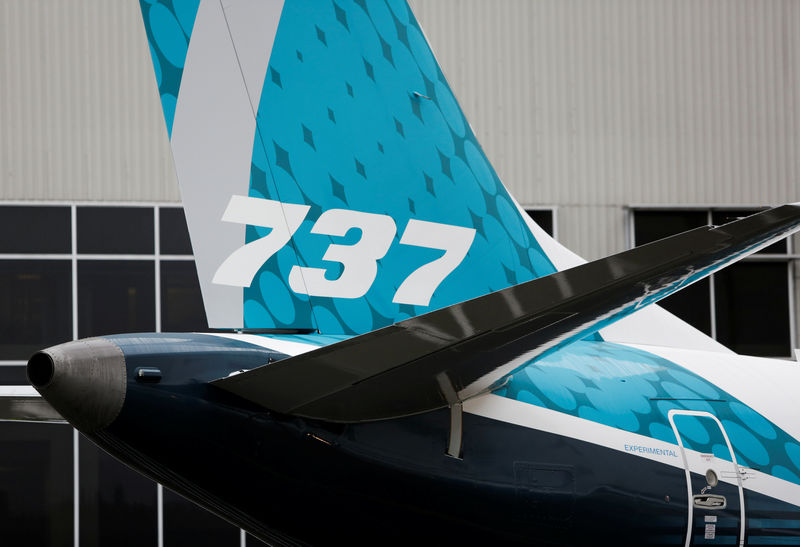Investing.com - Here’s a look at three things that were under the radar this past week.
Yield Curve Inversion: This Time It’s Different?
An important part of the yield curve inverted earlier this week for the first time since 2007, sounding the alarm on a possible recession.
But don’t let the prophetic powers of the bond market, which has flagged every recession over the past 60 years, muddy your judgement, as there are other forces at play causing the yield curve to invert, according to former Federal Reserve Chairwoman Janet Yellen.
The yield on 10-year Treasuries fell below the rate on 2-year Treasuries, sending global equities tumbling, including the Dow, which fell 800 points on Wednesday.
The yield curve serves as a kind of screen for the economy and when it inverts, bad things tend to happen, but Yellen said, “I would really urge that on this occasion it may be a less good signal.”
Yellen said the inversion can be explained by a number of factors other than market expectations about the future path of interest rates that are pushing down long-term yields.
And she’s not alone.
There is international arbitrage going on in the bond market that is exacerbating the decline in long-term Treasury yields lower,” Former Federal Reserve Chairman Alan Greenspan said earlier this week.
With other sovereign bonds like the German bund offering negative yields, investors have little option but to pile into long-term Treasuries, triggering a rally in prices and pushing yields down.
Major foreign holders of Treasuries had $6.636 trillion of U.S. government debt in June, up from $6.539 trillion in May, the latest Treasury data showed.
Would Southwest Try Another Plane Besides the 737 Max?
Southwest Airlines (NYSE:LUV) has been an exclusive customer of the Boeing (NYSE:BA) 737 for some 48 years.
Whenever Boeing (NYSE:BA) started thinking about updating the plane, Southwest was always the first carrier it brought into the discussion.
Southwest is betting big on the 737 Max, grounded since two fatal crashes earlier this year, with 280 on order. But it has 34 jets from that order sitting on a Victorville, Calif. airfield after being grounded.
Boeing (NYSE:BA) will keep 41 more, originally scheduled to be delivered this year, until the plane is recertified.
So, would Southwest add another plane to the mix? Maybe. But don't bet on it happening any time soon.
Dominic Gates, the Seattle Times' respected aerospace reporter, noted this past week that Southwest has proposed language in a new union contract that would let the carrier fly "more narrowbody aircraft types.” The idea would let the carrier fly "aircraft types that are better suited for some of the markets we serve.”
(That's one explanation. Another might be that it may not be so smart to commit your business to one airplane manufacturer. Southwest and Alaska have done it very successfully, but the 737 Max problems are difficult and causing operational problems.
Either way, the contract proposal set off speculation the carrier might consider the Airbus A220, which is the renamed Bombardier CSseries of small commercial jets. Airbus acquired a 50.1% interest in the business in 2018.
Another possibility is one of the jets made by Embraer, the Brazilian aircraft company that's the third-largest commercial aircraft maker after Boeing (NYSE:BA) and Airbus. More importantly, Boeing is buying an 80% interest in Embraer's commercial airplane business, which will be renamed Boeing Brasil-Commercial.
But you just don't go down to the airplane store and pick up another jet. Getting deals set up to add either plane will take months if not years to negotiate, not to mention training pilots, cabin crews and support teams.
So maybe Southwest will add another jet to its fleet, but only some day. Which may be why Boeing's stock was unaffected by the report on Friday.
CEO Pay Has Soared in the Last 20 Year
When it comes to compensation, the rate of increases in pay at the top level is soaring, but its much more muted for the average worker, according to a study released by the Economic Policy Institute this week.
CEO pay soared 940.3% from 1978 to 2018 when stock option realization was taken into account, the EPI said.
By comparison, the wages for the typical worker grew just 11.9%.
During that time period the S&P rose 706.7%, while pay for very high earners rose 339.2%.
“CEOs are getting more because of their power to set pay, not because they are increasing productivity or possess specific, high-demand skills,” the EPI said.
“This escalation of CEO compensation, and of executive compensation more generally, has fueled the growth of top 1.0% and top 0.1% incomes, leaving less of the fruits of economic growth for ordinary workers and widening the gap between very high earners and the bottom 90%,” it added. “The economy would suffer no harm if CEOs were paid less (or taxed more).”
